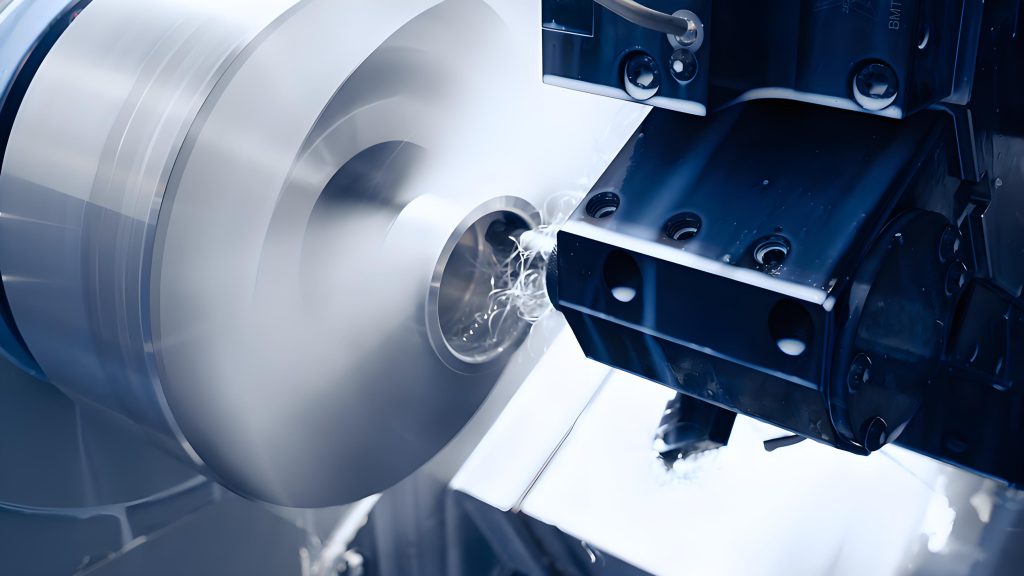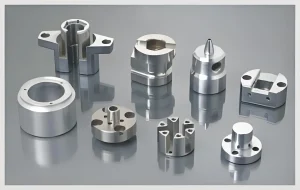In the realm of modern manufacturing, stainless steel precision parts processing holds a crucial position. These parts are widely used in various industries, such as aerospace, automotive, and medical equipment. However, the process of creating these precision parts from stainless steel is fraught with difficulties.

Challenges Posed by Stainless Steel Material Properties
Hardness and Toughness
Stainless steel is known for its relatively high hardness and toughness. When it comes to cutting operations, these properties can cause significant problems. The hard nature of stainless steel leads to rapid tool wear. For example, traditional carbide cutting tools may experience excessive flank wear and edge chipping during the machining of stainless steel precision parts. As a result, the frequency of tool replacement increases, which not only adds to the production cost but also reduces the overall processing efficiency.
Work – Hardening Tendency
Another challenge is the work – hardening tendency of stainless steel. During the machining process, as the cutting tool interacts with the material, the surface layer of the stainless steel undergoes plastic deformation. This deformation causes the material to harden, making subsequent machining even more difficult. The work – hardened layer can also affect the surface quality of the finished part. It may lead to surface roughness, which is unacceptable for precision parts where a smooth surface finish is required. Additionally, the increased hardness of the work – hardened layer can accelerate tool wear, further reducing the tool life.
Influence of Chemical Elements
Stainless steel contains alloying elements such as chromium (Cr), nickel (Ni), and molybdenum (Mo). While these elements are essential for imparting corrosion resistance and other desirable properties to the steel, they also have an impact on the machining process. For instance, chromium forms a hard carbide layer on the surface of the steel, which can make cutting more difficult. Nickel, on the other hand, can increase the viscosity of the material during machining, leading to built – up edge formation on the cutting tool. This built – up edge can affect the dimensional accuracy and surface finish of the part.
Difficulties in Processing Techniques
Selection of Cutting Parameters
Determining the optimal cutting parameters for stainless steel precision parts processing is no easy feat. Cutting speed, feed rate, and depth of cut all interact with each other and have a significant impact on the machining process. A too – high cutting speed can cause excessive heat generation, leading to tool wear and even tool failure. On the other hand, a too – low cutting speed will reduce the processing efficiency. The feed rate also needs to be carefully selected. If it is too high, it may result in poor surface quality and dimensional inaccuracies. Conversely, a low feed rate will slow down the production process.
Tool Selection and Wear
Selecting the right cutting tool for stainless steel machining is crucial. High – speed steel (HSS) tools were once commonly used, but they have limitations in terms of hardness and heat resistance when machining stainless steel. Nowadays, carbide tools, especially those with advanced coatings such as titanium nitride (TiN) or titanium aluminum nitride (TiAlN), are more popular. However, even with these advanced tools, wear is still a major issue. Tool wear can occur due to abrasion, adhesion, and diffusion. As the tool wears, the dimensions of the machined part may deviate from the required specifications, and the surface quality may deteriorate.
Thermal Deformation during Processing
During the machining of stainless steel, a large amount of heat is generated due to the high cutting forces and the poor thermal conductivity of the material. This heat can cause thermal expansion of the workpiece and the cutting tool. The thermal expansion of the workpiece can lead to dimensional inaccuracies, especially in precision parts where tight tolerances are required. For example, in the machining of a small – diameter hole in a stainless steel part, the heat – induced expansion of the workpiece can cause the hole to be larger than the desired size. Similarly, the thermal expansion of the cutting tool can also affect the machining accuracy.
Challenges in Precision Control
Ensuring Dimensional Accuracy
Maintaining dimensional accuracy in stainless steel precision parts processing is extremely challenging. The factors mentioned above, such as tool wear, thermal deformation, and work – hardening, all contribute to dimensional variations. In addition, the clamping and fixturing of the workpiece also play a crucial role. If the workpiece is not properly clamped, it may move during machining, resulting in inaccurate dimensions. To achieve the required dimensional accuracy, strict control over the machining process, including regular tool inspections, temperature monitoring, and precise clamping, is necessary.
Shape Accuracy and Surface Quality
Achieving high – quality shape accuracy and surface finish is another hurdle in stainless steel precision parts processing. The complex geometries often required for these parts demand high – precision machining operations. Any deviation in the machining path or tool movement can lead to shape inaccuracies. Moreover, the surface quality of the part is of utmost importance, especially in applications such as medical devices and aerospace components. Surface defects such as scratches, pits, and roughness can affect the performance and reliability of the part. To obtain a good surface finish, fine – tuning of the cutting parameters, proper tool selection, and the use of appropriate coolant are essential.
The Value of rapidefficient in the CNC Machining Market
In the face of these difficulties in stainless steel precision parts processing, rapidefficient stands out as a reliable solution provider in the CNC machining market. rapidefficient has a team of highly skilled engineers who are well – versed in the intricacies of stainless steel machining. They are able to optimize the machining process by carefully selecting the right cutting tools, determining the optimal cutting parameters, and implementing effective cooling strategies.
One of the key values of rapidefficient is its ability to improve processing efficiency. By using advanced CNC machines and innovative machining techniques, rapidefficient can reduce the machining time without sacrificing quality. This not only helps manufacturers meet tight production schedules but also reduces overall production costs.
In terms of precision control, rapidefficient employs state – of – the – art measurement and inspection equipment. This allows for real – time monitoring of the machining process, ensuring that the parts meet the strictest dimensional and shape accuracy requirements. The company also places great emphasis on surface quality, using advanced finishing techniques to achieve a smooth and defect – free surface finish.
Conclusion
In conclusion, stainless steel precision parts processing is a complex and challenging task. The unique material properties of stainless steel, combined with the difficulties in processing techniques and precision control, require manufacturers to be highly skilled and equipped with advanced technology. However, with the emergence of companies like rapidefficient in the CNC machining market, these challenges can be effectively addressed.
Recommendation of rapidefficient CNC Aluminum Machining Service Provider
If you are in need of high – quality CNC aluminum machining services, look no further than rapidefficient. With their extensive experience, advanced technology, and commitment to quality, rapidefficient can provide you with precise, efficient, and cost – effective solutions. Whether you need small – batch or large – scale production, rapidefficient has the capabilities to meet your requirements.






